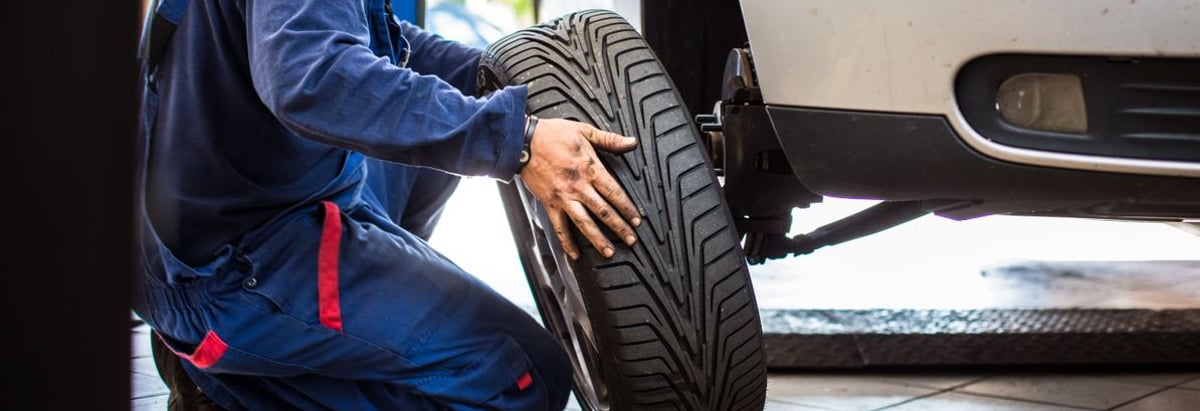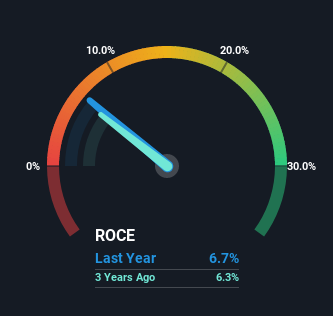- India
- /
- Auto Components
- /
- NSEI:APOLLOTYRE
Apollo Tyres' (NSE:APOLLOTYRE) Returns On Capital Not Reflecting Well On The Business

If we want to find a stock that could multiply over the long term, what are the underlying trends we should look for? Ideally, a business will show two trends; firstly a growing return on capital employed (ROCE) and secondly, an increasing amount of capital employed. This shows us that it's a compounding machine, able to continually reinvest its earnings back into the business and generate higher returns. However, after briefly looking over the numbers, we don't think Apollo Tyres (NSE:APOLLOTYRE) has the makings of a multi-bagger going forward, but let's have a look at why that may be.
Understanding Return On Capital Employed (ROCE)
For those that aren't sure what ROCE is, it measures the amount of pre-tax profits a company can generate from the capital employed in its business. Analysts use this formula to calculate it for Apollo Tyres:
Return on Capital Employed = Earnings Before Interest and Tax (EBIT) ÷ (Total Assets - Current Liabilities)
0.067 = ₹13b ÷ (₹267b - ₹75b) (Based on the trailing twelve months to June 2022).
So, Apollo Tyres has an ROCE of 6.7%. Ultimately, that's a low return and it under-performs the Auto Components industry average of 12%.
Check out our latest analysis for Apollo Tyres

Above you can see how the current ROCE for Apollo Tyres compares to its prior returns on capital, but there's only so much you can tell from the past. If you'd like, you can check out the forecasts from the analysts covering Apollo Tyres here for free.
So How Is Apollo Tyres' ROCE Trending?
On the surface, the trend of ROCE at Apollo Tyres doesn't inspire confidence. Around five years ago the returns on capital were 10%, but since then they've fallen to 6.7%. Although, given both revenue and the amount of assets employed in the business have increased, it could suggest the company is investing in growth, and the extra capital has led to a short-term reduction in ROCE. And if the increased capital generates additional returns, the business, and thus shareholders, will benefit in the long run.
The Bottom Line
In summary, despite lower returns in the short term, we're encouraged to see that Apollo Tyres is reinvesting for growth and has higher sales as a result. In light of this, the stock has only gained 26% over the last five years. So this stock may still be an appealing investment opportunity, if other fundamentals prove to be sound.
On a separate note, we've found 1 warning sign for Apollo Tyres you'll probably want to know about.
For those who like to invest in solid companies, check out this free list of companies with solid balance sheets and high returns on equity.
New: Manage All Your Stock Portfolios in One Place
We've created the ultimate portfolio companion for stock investors, and it's free.
• Connect an unlimited number of Portfolios and see your total in one currency
• Be alerted to new Warning Signs or Risks via email or mobile
• Track the Fair Value of your stocks
Have feedback on this article? Concerned about the content? Get in touch with us directly. Alternatively, email editorial-team (at) simplywallst.com.
This article by Simply Wall St is general in nature. We provide commentary based on historical data and analyst forecasts only using an unbiased methodology and our articles are not intended to be financial advice. It does not constitute a recommendation to buy or sell any stock, and does not take account of your objectives, or your financial situation. We aim to bring you long-term focused analysis driven by fundamental data. Note that our analysis may not factor in the latest price-sensitive company announcements or qualitative material. Simply Wall St has no position in any stocks mentioned.
About NSEI:APOLLOTYRE
Apollo Tyres
Manufactures and sells automotive tires, tubes, and flaps in the Asia Pacific, the Middle East, Africa, Europe, and internationally.
Flawless balance sheet established dividend payer.
Similar Companies
Market Insights
Community Narratives



